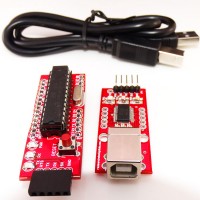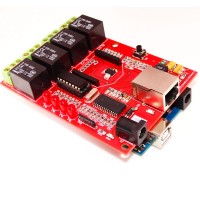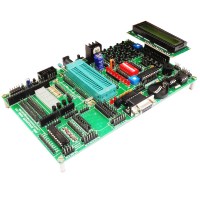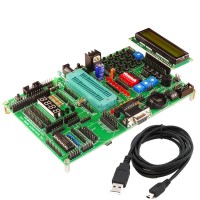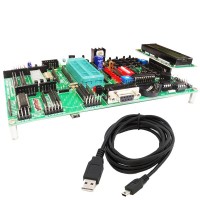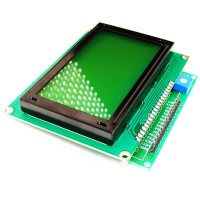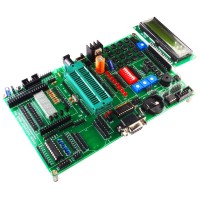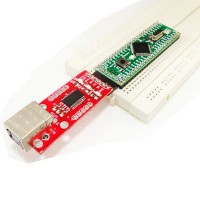Search results for 'ph level'
-
Atmega 328 is one of the most commonly used Micro controllers with open source platform amongst many hobbyist and industrial communities. The simplicity and the low power of Atmega 328 helps design many prototype boards which could be used in numerous applications.
ORDER CODE: RDL/DUF/14/001/V1.0
Learn More -
The Internet of Things (IoT) is the interconnection of uniquely identifiable embedded computing devices within the existing Internet infrastructure.
Web shield is a smart communication shield for controlling and monitoring embedded application via internet.Internet is the media and economic way for communication between anywhere from to geographical location.This shield is compatible with Arduino open source and make easy way for customized application development.This shield has got four relay 10AMP.The board by ULN2003 IC. The board works on 5V.
Order Code : RDL/ERS/14/001/V1.0
Learn More -
Due to their low cost, wide availability, large user base and free development tools make PIC Development Boards popular among the Industrial Developers, Educational Programmers and Hobbyists
Order Code : RDL/PDB/14/001/V1.0
Learn More -
8051 are popular with both industrial developers and hobbyists alike due to their low cost, wide availability, large user base, extensive collection of application notes, availability of low-cost or free development tools, and serial programming (and re-programming with flash memory) capability. They are also commonly used in educational programming.
Order Code : RDL/8DB/14/001/V1.0
Learn More -
PICs are popular with both industrial developers and hobbyists alike due to their low cost, wide availability, large user base, extensive collection of application notes, availability of low cost or free development tools. They are also commonly used in educational programming .
Order Code : RDL/PIC-U/14/001/V1.0
Learn More -
8051 are popular with both industrial developers and hobbyists alike due to their low cost, wide availability, large user base, extensive collection of application notes, availability of low cost or free development tools, and serial programming (and re-programming with flash memory) capability. They are also commonly used in educational programming.
Order Code : RDL/8051-U/14/001/V1.0
Learn More -
LCD stands for Liquid Crystal Dispaly. It can be used to display anything. They are of many types. The ones we commonly use for embedded systems, robotics, etc are of two types – character LCD and graphical LCD. The 16x2 LCD Characters have their own limitations; they can only display characters of certain dimensions. The Graphical LCDs are thus used to display customized characters and images. The Graphical LCDs find use in many applications; they are used in video games, mobile phones, lifts etc. as display units.
Order Code : RDL/LCD/14/001/V1.0
Learn More -
ATMEGA are popular with both industrial developers and hobbyists alike due to their low cost, wide availability, large user base, extensive collection of application notes, availability of low cost or free development tools. They are also commonly used in educational programs.
Order Code : RDL/ADB/14/001/V1.0
Learn More -
LPC2129 is a single-chip 32-bit microcontroller with 256KB on-chip Flash ROM with In-System Programming (ISP) and In-Application Programming (IAP) 16KB RAM having Real Time Clock, Watchdog Timer, General purpose I/O pins. CPU clock up to 60 MHz, On-chip crystal oscillator and On-chip PLL. This IC also supports Interrupt Controller, 2 SPI serial interfaces, Two UARTs, I2C serial interface, PWM unit with up to 6 PWM outputs, Two timers (7 capture/compare channels), 4-channels 10bit ADC, 2 CAN channels.
Order Code : RDL/LPC-29/14/001/V1.0
Learn More -
LPC2148 is a single-chip 32-bit RISC Microcontroller with 512KB on-chip Flash ROM with In-System Programming (ISP) and In-Application Programming (IAP) 32KB RAM having Interrupt Controller, Two 10bit ADCs with 14 channels, USB 2.0 Full Speed Device Controller, Two UARTs, one with full modem interface. Two I2C serial interfaces, Two SPI serial interfaces Two 32-bit timers, Watchdog Timer, PWM unit, Real Time Clock with optional battery backup, Brown out detect circuit General purpose I/O pins. CPU clock up to 60 MHz, On-chip crystal oscillator and On-chip PLL.
Order Code : RDL/LPC-48/14/001/V1.0
Learn More


